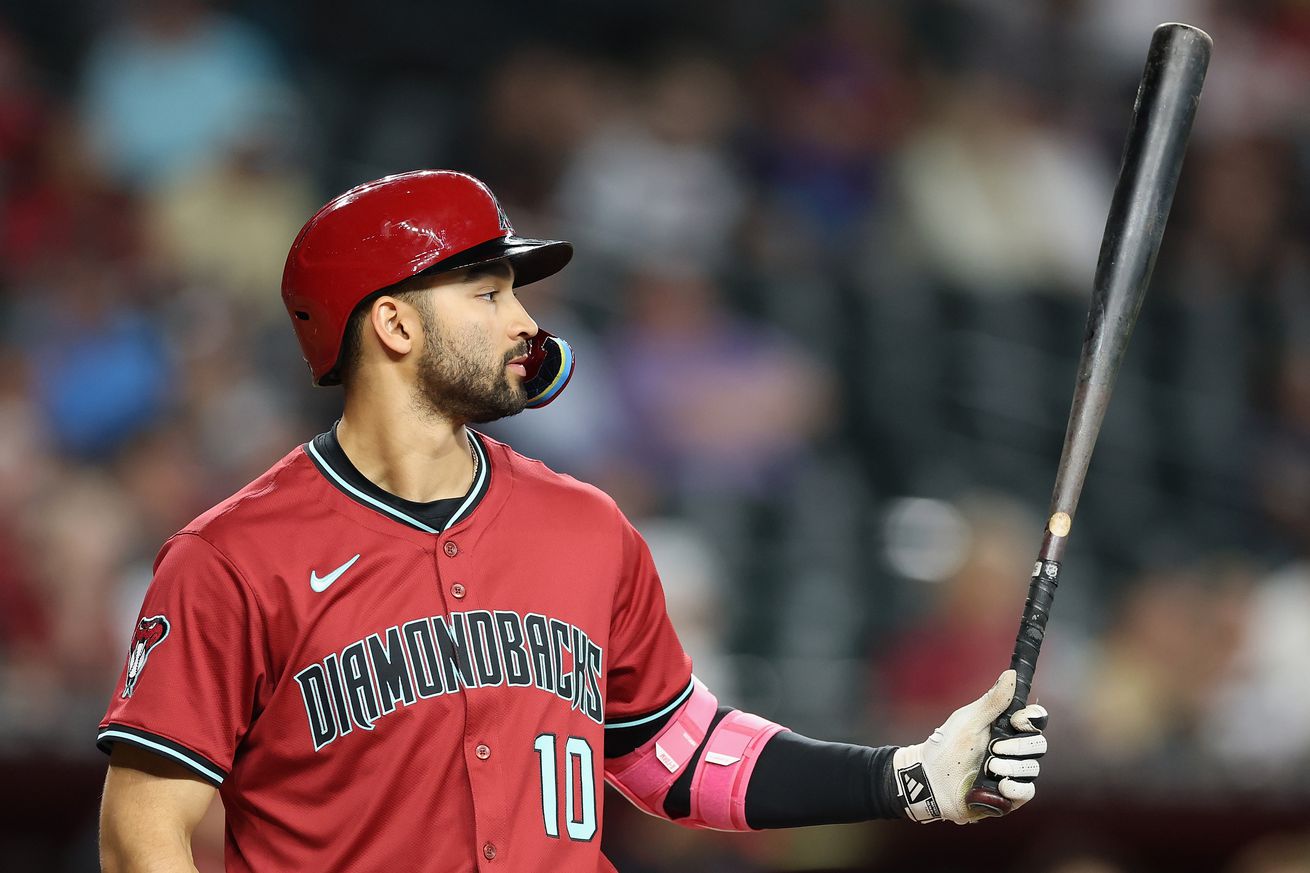
Now that the draft and the trade deadline are out of the way, it is time to update the top-30 prospects in the system.
Usually, these sorts of lists have minor, incremental changes from one release to the next. That’s usually informed by a promotion here and there and perhaps an occasional trade. A long-term injury can sometimes drop a prospect a bit. This update though, it’s pretty big. Arizona has added a number of names to their top-30, have promoted much of anyone, and have also seen one of the bigger prospects on the list take a massive jump in the standings.
Without further ado, here is the updated top-30 prospects list. Where applicable, I have listed the Baseball America, MLB Pipeline, and Fangraphs rankings where applicable. Baseball America has not updated their rankings since the trades, so those rankings will skew more heavily towards prospects from the draft and older. MLB has not added draft picks yet, so that will impact their rankings somewhat. Prospects acquired at the trade deadline will be italicized.
The Prospects 11-30
30. Adrian Del Castillo – C/DH (BA 11, MLB Not Ranked, FG Not Ranked )
29. David Hagaman – RHP (BA Not Ranked, MLB 14, FG 15)
28. Andrew Hoffman – RHP (BA Not Ranked, MLB Not Ranked, FG 20)
27. Brian Curley – RHP (BA Not Ranked, MLB Not Ranked, FG 33)
26. Spencer Giesting – LHP (BA 24, MLB 24, FG 27)
25. Adriel Radney – OF (BA Not Ranked, MLB Not Ranked, FG 23)
24. Hunter Cranton – RHP (BA Not Ranked, MLB 23, FG 11)
23. Yilber Diaz – RHP (BA 10, MLB 16, FG 22)
22. Brandyn Garcia – LHP (BA Not Ranked, MLB 20, FG 21)
21. Juan Burgos – RHP (BA Not Ranked, MLB 25, FG 31)
20. Daniel Eagen – RHP (BA 16, MLB 13, FG Not Ranked)
19. Christian Mena – RHP (BA 9, MLB 11, FG 8)
18. Mitch Bratt – LHP (BA Not Ranked, MLB 10, FG 6)
17. Cristofer Torin – SS/2B (BA 15, MLB 19, FG 37)
16. Dylan Ray – RHP (BA 19, MLB 27, FG 32)
15. Jansel Luis – SS (BA 8, MLB 12, FG 3)
14. Ashton Izzi – RHP (BA Not Ranked, MLB 15, FG 16)
13. Yu-Min Lin – LHP (BA 17, MLB 18, FG 26)
12. Druw Jones – OF (BA 12, MLB 17, FG 24)
11. Patrick Forbes – RHP (BA 13, MLB Not Ranked, FG 14)
The Prospects 1-10
10. Kohl Drake – LHP (BA Not Ranked, MLB 7, FG 5)
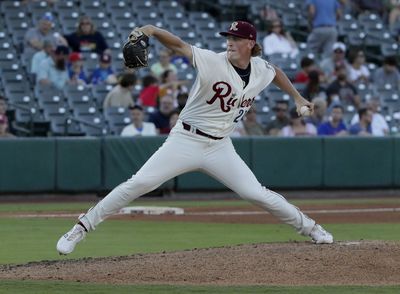
Special Contributor
Standing 6’ 5” and throwing from the left side, Drake represents the top arm in the system. The recently acquired Drake brings above average command and improving velocity. When drafted, Drake averaged 92-93 on his fastball. That is now averaging 94-95. He also sports a good curve, which is his best secondary pitch, while also featuring a changeup with 10 mph of separation from his fastball. Drake works up around the letters to make his fastball play up. This results in Drake giving up a higher than average number of home runs. This has not been too much of an issue so far as he tends to miss up instead of down if he misses his spot. Recently promoted to AAA, Drake is not far from his MLB debut. There are some that feel Arizona may be aggressive and let him get a cup of coffee at the end of this year. It still feels more likely that he competes for a rotation spot in spring and then, if he does not secure one, makes his debut around the break next season.
9. Demetrio Crisantes – 2B (BA 5, MLB 4, FG 7)

Crisantes is going to go as far as his bat will take him. He is an average fielder at second, but makes all the plays one would expect. He lacks any true standout tool in the field, but he does all the little things the right way, maximizing the results from his average fielding, arm, and speed. Crisantes has the reflexes and instincts to play third, but his arm does not profile well for the position as his throws across the diamond lack carry. At the plate, Crisantes makes borderline elite contact on swings in the zone, which is a good thing as Crisantes loves to swing at strikes in the zone. Crisantes features a very simple, repeatable and direct swing that starts with a minor leg lift to as he begins his load. With a good understanding of the zone and an aggressive in-zone approach, Crisantes not only has an above average hit tool, but projected plus power. Injury has derailed Crisantes’s development in 2025, limiting him to only 151 plate appearances. If he picks up where he left off when he reports in 2026, Crisantes could move rapidly through Amarillo and see Reno late in the season. The move to AA-Amarillo should be his first real test to see if he can keep his elite walk rate and impressive strikeout rate. For those 151 plate appearances in 2025, Crisantes featured more walks (21)than strikeouts (19).
8. LuJames Groover – INF (BA 6, MLB 8, FG 4)
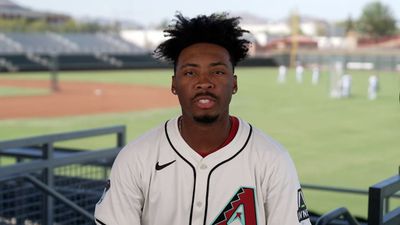
When Groover was first selected in the second round of the 2023 draft, he was considered one of the more polished hitters in the class. The questions regarding Groover mostly revolved around his ability to play the hot corner, a position he only moved to during his final season at NC State. Groover’s development was sidelined for a bit by a broken wrist suffered in one of his first professional games. While Groover got off to a bit of a slow start with the bat, his defense at third has improved dramatically and there is now a good chance he can stick at the hot corner. Over the last year, Groover’s bat has taken off. Once he found his groove (no pun intended), Groover began to pound the ball with authority. In 2025, he’s done nothing but rake in AA-Amarillo, recently earning himself an overdue promotion to AAA-Reno. While Jordan Lawlar is still considered the immediate future at third base, Groover’s ascendency looks to be making that something of a competition. If Groover continues to make the adjustments the way he has been since getting fully healthy, he could very easily see the Majors by the trade deadline next season. Not a great runner, and with better reflexes than range, Groover is positionally limited to playing the corner infield. However, his bat looks like it will carry him enough to let him find a home at either corner.
7. Tommy Troy – INF/OF (BA 7, MLB 5, FG 10)
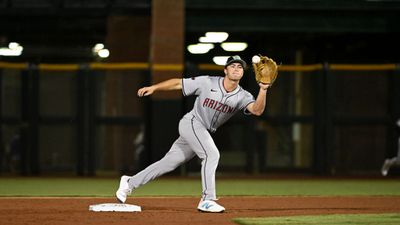
When Tommy Troy was selected, there was some expectation that he might be a fast-mover through the Arizona pipeline. Then, as has happened to far too many other Arizona prospects, he saw a significant portion of his first professional season lost to injuries. Now healthy though, Troy is finally off and running. When drafted, Troy was already considered one of the most dangerous fastball hitters to be had. Early returns only helped confirm that. The logical result of that is that Troy began to see a steady diet of breaking balls of all sorts, breaking balls whose spin he simply did not pick up on and was prone to missing quite frequently by chasing them out of the zone. Troy’s defense at short took a hit when he made the leap to professional ball, mostly with moving to his right. The average arm for shortstop did not help as, when ranging to his right he would rush throws. It was a mess. Troy played exclusively third base his last year at Stanford and he still looks good at the hot corner. Arizona has been getting him plenty of reps at third and has recently experimented with him in the outfield. All of Troy’s tools still grade out as average or better, both in the field and at the plate. This season, he abused AA-ball, hitting 12 home runs, 20 doubles, and stealing 21 bases. This earned him a post-deadline promotion to AAA-Reno. With such a late promotion to Reno, Troy will likely start 2026 there unless something big happens this winter. Troy, like Groover, is going to put a great deal of pressure on the current members of the MLB infield and he should probably see his debut come near the end of next season.
6. Tyler Locklear – 1B (BA Not Ranked, MLB 6, FG 12)
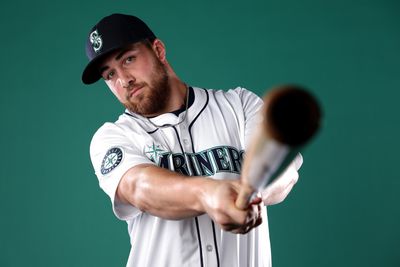
Photo by Steph Chambers/Getty Images
Not long ago, Locklear appeared to be heading into organizational filler territory due to the excess of swing and miss in his game and being positionally limited to first base. Then, Locklear overhauled his swing and his approach at the plate, dropping his hands and taking a more balanced swing. The results were transformative, allowing Locklear to start catching up to fastballs enough to pull them and helping him stay on breaking pitches better. This, combined with Locklear’s plus-plus power has rocketed him back up the board for many evaluators. His defense at first has improved enough that he should be fine there as an everyday solution, or at least as the right-handed bat in a platoon at both first and designated hitter. Acquired at the deadline in the Eugenio Suarez deal, Locklear has already been brought up to the 26-man roster and will get a long look there as the season winds down. If he can continue to show the same improvements at the plate, Arizona has found their first baseman of the future. At worst, he seems to profile as a capable right-handed power bat off the bench, though that could obviously change if he does not continue to adapt to the Majors. Locklear has a decent eye and does not chase nearly as often as he used to, having a perfectly respectable strikeout rate for a big-swinging power hitter. He also takes his walks, giving him a profile not unlike Josh Naylor’s, though with better defense.
5. J.D. Dix – SS (BA 14, MLB 9, FG 18)
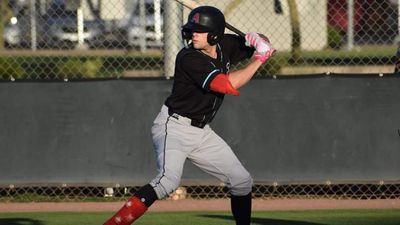
Dix was taken with the 35th pick in the 2024 draft and convinced to forego his commitment to Wake Forest. Dix has the size, athleticism, hands, and footwork that can play anywhere on the dirt. Most evaluators feel he has plenty of arm and range to stick at shortstop long-term. However, given Arizona’s glut of infield prospect, Dix’s positional flexibility will only help him. Still only 19 years of age, Dix is still growing into his already impressive 6’2” body. Dix is a switch-hitter who swings more comfortably from the left side. Dix already demonstrates above average gap-to-gap power, leading many to see the potential for him to reach true plus gap-to-gap power as he continues to fill out and work with professional trainers and conditioning coaches. Dix is currently showing off all his tools in Visalia, where he has been playing second base. He should soon be moving up to A+ ball, where there is every possibility he will move back across the diamond to short. Diamondbacks fans are already familiar with having a slick-fielding, switch-hitting, power bat at second base. Should Dix not find a home at shortstop for some reason, he could continue that legacy. Enjoy a highlight from the eve of the trade deadline.
JD Dix is a cheat code #GoRawhide pic.twitter.com/fpU0aCZgUv
— Visalia Rawhide (@VisaliaRawhide) July 31, 2025
4. Kayson Cunningham – SS (BA 2, MLB Not Ranked, FG 2)
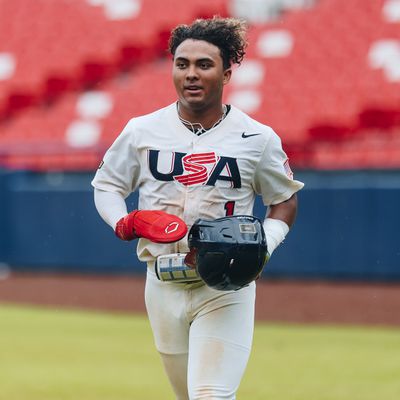
Taken with Arizona’s first pick in last month’s draft, Kayson Cunningham represents yet another dynamic infielder with high upside and above average tools across the board save his arm, which is average. Cunningham had the distinction of being the starting shortstop for USA Baseball’s 18U National Team on a team stacked with impressive prep shortstop talent. A strong argument can be made that Cunningham was the best pure hitter to be found anywhere in his draft class. Thanks to a quick and efficient left-handed swing, Cunningham has explosive hands, quick enough to snatch fastballs at the top of the zone. Cunningham also exhibits great body control, allowing him to be adept at adjusting the posture of both his upper and lower body to move the barrel all over the place. Cunningham has very special feel for hitting and brings a surprising amount of power for his 5’10” size. Cunningham has all the tools necessary to remain at short, but his average arm profiles him better for second base. Cunningham also features very good speed, getting out of the box quickly and moving well in the field. While it is not currently a big part of his game, he also profiles as a 20 steal threat.
3. Ryan Waldschmidt – OF (BA 4, MLB 3, FG9)
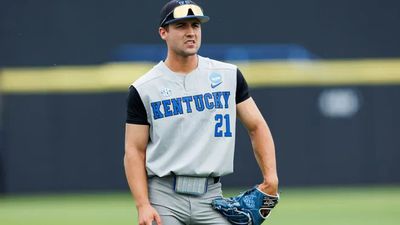
Ryan Waldschmidt took a semi-aggressive assignment to A+ ball to open the season and ran with it, earning himself a promotion to AA-Amarillo where he has cooled off somewhat, but has shown signs of making the adjustment. The 6’2” right-hander is a protoypical left fielder in almost every sense. He runs well with average or better speed once he gets up to speed but does not have the explosive speed for stealing bases. He has an average arm for an outfielder and has played on both corners. His swing is violent and aggressive, resulting in many hard-hit balls. While the swing is violent, Waldschmidt’s body is quiet and his swing comes with essentially no stride in his load. Waldschmidt’s bat-speed is elite, allowing him to catch up with nearly any sort of pitch. His size and the violent nature of his swing make down-and-in his happy zone. But Waldschmidt possesses accidental opposite field home run power, meaning that he does not have to rely on pitches in his happy zone to be effective. Waldschmidt’s fielding is average, but he tends to go all-out on every play. He has received high marks for his work ethic, makeup, and coachability. Having only been drafted in 2024, there is every reason to expect Waldschmidt to make the jump to AAA-Reno around mid-season next year. At that point, he’s knocking on the door, where his bat will do the pounding. If he continues to hit, he’ll move along quickly and could bring some much-needed handedness balance to the outfield.
2. Jordan Lawlar INF (BA 1, MLB 1, FG 1)
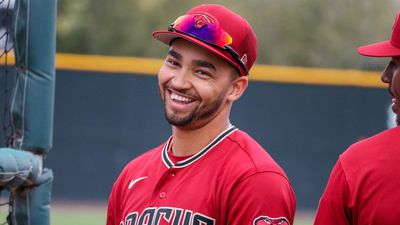
There really is not much left to be said about Jordan Lawlar. Lawlar’s drop from first to second on this list is far less about his on-field abilities and far more about his inability to actually stay on the field. Lawlar was taken in the 2021 draft and received six plate appearances in the complex before he was done for the year. Since the beginning of 2022, Lawlar has only managed a combined total of 962 minor league plate appearances across nearly three season. He has added 56 MLB plate appearances to that, the entirety of which were fairly ugly and came at a wildly inconsistent pace. After a disastrous (to be generous) MLB debut during the 2023 playoff stretch, Lawlar has yet to return to the Majors with any chance of sticking. He never returned to the Majors in 2024 and has only managed 22 plate appearance at the highest level this year, during which he went hitless. Lawlar is a smooth fielder with good instincts. His arm has improved somewhat since he turned pro and there is plenty of expectation that he will get a prolonged look at third base later this year. His arm profiles average at best at third, but the glove and reflexes could help to carry him there. Lawlar has plus power, but still tends to hunt pitches with his swing. Speed-wise, Lawlar can fly and should be a perennial 30+ stolen base threat. At peak, Lawlar is a safe 25/25 threat and could profile as a 30/30 threat, playing plus defense. Lawlar has so far played second, third, and short in the minors, but could also find some reps in left field moving forward as Arizona tries to figure out how best to get as many of their developing bats into lineups as possible. Lawlar still profiles as a potential future all-star. But now, he has got to get healthy and stay that way again. Having only just returned to on-field activity in the last week from yet another muscle issue, Lawlar should find his way back to AAA-Reno within the next week. If he can stay fit and get some reps in to find his timing again, he should arrive in Arizona before this month is out, at which point he should be an everyday starter to finally see what he can do at the highest level.
- Slade Caldwell – OF (BA 3, MLB 2, FG 13)
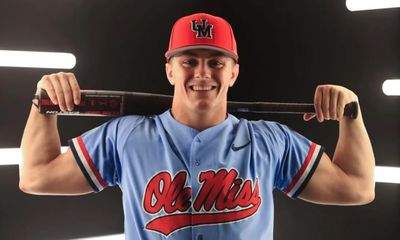
Last year’s first pick by the Arizona Diamondbacks has done nothing but improve his stock since turning professional. Caldwell checks in as another player that fits what has largely become known as the Arizona/Mike Hazen type. He’s yet another undersized, speedy, toolsy, up-the-middle player that hits from the left side. Comps of Jett Williams, Alek Thomas, Corbin Carroll, and Dominic Fletcher have all been dropped on him at one point or another. Given that three of those comps come from the Arizona system, it is not hard to see how he has been labeled as fitting a type. Unlike Thomas and Carroll, Caldwell has a solid frame and build, not unlike former Arizona defensive standout, Daulton Varsho. Like Carroll, Caldwell has lightning fast speed which allows him to play comfortably anywhere on the grass. Also like Carroll, his arm will be exposed in right, as it is accurate but not strong. At age 18, there is a chance he could still fill out more, adding even more power to a swing that already has demonstrated above average pop. This is hard to gauge though as he already posses a rather muscular frame. Given his diminutive stature, Caldwell presents a smaller strike zone and Caldwell leverages this to his advantage. For someone so young, Caldwell already shows an advanced feel for the zone and brings an approach that leads to high on-base percentages. This allows him to make the best use of his 70-grade speed. Caldwell projects as a future plus outfield defender with easy 20/20 potential and an upside of even more. Caldwell started the year in low-A and chewed it up with gusto, earning himself a mid-season promotion to A+ ball after 216 plate appearance. Since the promotion, he has cooled somewhat, but has started showing more signs of coming around again. Reaching AAA-Reno by the end of next season still feels like it would be one hack of a stretch, but it remains a possibility if he makes quicker adjustments. More likely though, he is in Reno in 2027 and then knocking on the door of the 26-man roster by the end of that year.
Honorable mentions: Christian Cerda, Jorge Barrosa, Yassel Soler, Caden Grice, Grayson Hitt
This list will no doubt change after the Arizona Fall League plays and Mike Hazen makes his offseason moves to restock the 26-man roster. I expect those moves and some graduations from and drops off to have this list looking very different come time for the March update.
